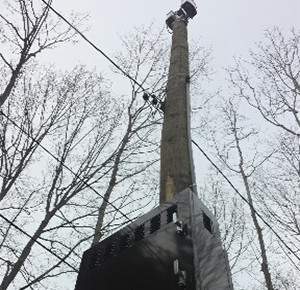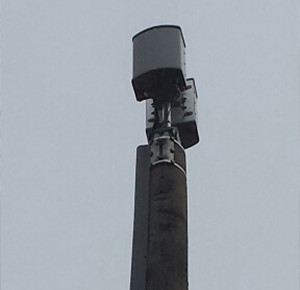During the course of the Public Hearings, three documents were submitted:
· 26 Unanswered Questions and Concerns About Potential Wireless Antennas in Matinecock Village
· Crown Castle's Response to the 26 Questions
· 10 Points: Martine Victor's Remarks to the Trustees of the Village of Matinecock 4/8/14
Eight Points of Discussion key issues about Crown Castle’s proposed Right-to-Use Agreement emerge in a review of these documents. We present them below as excerpts from the original documents.
Q: What present cellular and wireless coverage does the neighborhood already have from cell towers and wireless networks? Given the existing cellular, wireless, and hard-wired options, has careful evaluation been made of the need for a new network in our residential neighborhood? Where is that analysis?
- CC: “Crown Castle cannot respond to this question as this questions concerns installations which are not owned or operated by Crown Castle and would require access to information to which Crown Castle is not privy.”
- MV: “Crown Castle, in their response, said they are not “privy to any ‘needs assessment’ conducted. Well, why would they be putting up poles if there were not a ‘needs assessment’ conducted? This raises the question of whether Crown Castle is putting these poles up ‘on spec’, hoping to then attract providers. Why would we want to enable this for their financial gain, if that is the case, at the expense of our community, when they cannot even show us evidence of a need? As many of you surely know, determining if there is a market need is “Business 101.”
Q: What are the ways in which Crown Castle will derive revenue from these antennas? From whom, and, for what services? Do they have contracts with service providers for specific jobs about which we should be informed?
- CC: “Crown Castle derives revenue from leasing the infrastructure it owns to its customers. Any additional detail about Crown Castle’s contractual relationship with its customers is proprietary and will not be disclosed.”
- MV: “Applying for a few (poles) at a time can be deceptive if the real intention is ultimately to have many. Crown Castle says they won’t divulge their customers (the service providers) names, and yet they want the Village to give them carte blanche to allow these companies to put up antennas and future antennas. We need to know who the service providers are—and what Crown’s customers are planning to do here, if Crown Castle is unable to answer the question themselves.
Q: In the draft contract, mention is made of additional locations planned for antennas in Matinecock. Where will these be, and how many antennas in total are intended for Matinecock and environs? The full plan, not just the four nodes mentioned on Exhibit B, should be made clear to residents so that the full scope can be appreciated. Piecemeal information dribbled out on four antennas at a time, such as this, does not fully consider the interests of the residents you are representing.
- CC: “Crown Castle has no plans for additional locations in the Village at this time.”
Q: Are officials of the Village of Matinecock intending to allow antennas to be installed without evaluating their strength, frequencies, modulation characteristics, ranges, and radiation patterns? Why aren’t these important details being provided to residents for consideration? No technical specifications for the antennas have been provided in either the “Right-of-Way Use Agreement” or “Exhibit A.”
- CC: “The wireless antennas associated with Crown Castle’s service produce RF emissions at levels well below the FCC’s permitted maximums for general-populations, uncontrolled exposures, which is conservatively low. Crown Castle has submitted documentation to the Village which confirms this statement. Further, the Telecommunications Act of 1996 provides that “No State or local government or instrumentality thereof may regulate the placement, construction, and modifications of personal wireless service facilities on the basis of the environmental effects of radio frequency emissions to the extent that such facilities comply with the [FCC’s] regulations concerning such emissions.” (Section 704). For additional information on this subject please refer to the FCC’s website at: www.fcc.gov/encyclopedia/radio-frequency-safety”
- MV:“FCC Safety Guidelines, Referenced by Crown Castle, Were Not Intended For Non-Thermal Radiation Exposures. The FCC RF exposure guidelines were designed to determine safety for THERMAL EFFECTS of radiation, or radiation that is known to create heating. Theguidelines are not for non-thermal radiation emitted by wireless antennas, but for higher power radiation, such as in microwave oven, or high power EMF exposures right near a tower, for example. The non-thermal effects were not considered in establishing the FCC’s thermal guidelines, and so the thermal guidelines would not apply here.”
…“Antennas are sometimes found to be operating at higher than stated levels, in violation of the FCC thermal guidelines, and furthermore, there can be interactive effects, or interference fields, in the case of antennas, creating unintended hotspots from the waves interacting with each other. Any contract should require specificity with regard to what radiation emissions will be occurring, and ongoing monitoring of radiation levels in light of these potential hot spots above the FCC thermal limits, both initially, and as any antennas might be added in the future. This needs to be provided for in the contract.”
Q: What environmental reports have been requested and considered, or will be, by the Village of Matinecock of Crown Castle as part of a ‘State Environmental Quality Review’ process?
- CC Response: “Applicable state and federal law requires that local governments “manage the public rights-of-way…on a competitively neutral and nondiscriminatory basis.” Federal courts have upheld this statute to mean that a local government cannot impose certain requirements on new entrants (like Crown Castle) without imposing those same requirements on the incumbent local exchange carrier (the “ILEC”). TCG New York, Inc. vs. Village of White Plains, 305 F.3d 67 (2nd Cir. 2002). In conformity with how the Village treats other similarly-situated providers of telecommunications services in the Village’s Public Ways, Crown Castle was not required to submit SEQRA forms.”
Commentary: Crown Castle maintains that if other service providers in Matinecock have not been required to undergo a SEQRA review, neither should they. The concern is that CC is attempting to exempt itself from the NY State mandated SEQRA, when it should not. Given the potential risks involved in a DAS system mounted on four utility poles bordering on the Hope Goddard Iselin Sanctuary, and Planting Fields Arboretum, the Village should insist that this review be completed by CC so that any potential impact the proposed technologies might have on the environment are included in the Village’s evaluation of the contract.
Q: What plans does the Village of Matinecock have to add more antennas to utility poles? Section 11.2 states that Crown Castle will not have exclusive use of the utility poles, and suggests that the Village of Matinecock may permit other providers of communications services to add antennas to these poles.
- CC: “Crown Castle can only provide a response regarding its own planned network facilities (detail already provided) and is not aware of or privy to the plans the Village may have with regard to other companies which may seek to access the Village’s public ways.”
Q: Please provide financial projections that estimate the income generated by both the $500 pole fees and the 5% share of the “Crown Adjustment Gross Revenues,” for the Village of Matinecock during the initial 10-year term of the intended contract. The benefits of such a contract need to be weighed against the risks, and in consideration of the Village finances, this information should be provided with complete transparency.
- CC: “The current projection for compensation to the Village is approximately $800 per year per Equipment location. This amount will increase every year in accordance with Crown’s contracts with its customers. Audit provisions are provided for in the RUA.” (Right-of-Use Agreement)
- MV: “Crown Castle has estimated the annual revenue to the Village of Matinecock would be approximately $800 per pole, with adjustments for inflation over time. So initially, for 4 poles, we are talking about $3,200 to the Village of Matinecock annually—not a lot, certainly, and hardly worth the cost of the attorneys on this transaction. On legal costs alone, one wonders why the Village would be spending time on this contract.”
“I should also point out that though the Village’s cooperation is essential to Crown Castle’s intended purposes, the Village of Matinecock is not entitled to any part of monies received by Crown for the construction of the poles. These amounts are not known and could be significant. … It is my understanding that elsewhere, in other locations in many states, real estate owners are paid several thousand dollars per month per antenna by the telcom providers. Hypothetically, were there 8 antennas on a pole, at $3k per antenna, this might mean earnings of $24,000 for the real estate owner per pole. If it were $5,000 per antenna, that figure would rise to $40,000. And remember, the Village is getting only approximately $800 per pole.”
“In order to evaluate the fairness of this transaction Castle will receive for providing these poles to service providers, we need to know 1) the full compensation Crown2)how many antennas will be on each pole, and3)a realistic estimate of what they will be paid for them.”
“We need full transparency on the economics of what Crown receives from service providers to be able to determine if the $800 per pole is equitable. With more complete information, it might be appropriate for the Village to ask for a portion of the pole construction revenues, and perhaps a higher percentage than 5% of the Adjusted Gross Revenues—even up to 50% given how central the Village properties and cooperation are to the business goals of Crown Castle. Or, it might be more financially attractive for the town to own the poles.”
Q: Why is the Village of Matinecock agreeing in the draft contract that no zoning or planning board permit will be required for the installation of Crown Castle’s equipment? Should our community not be able to enforce zoning laws that concern commercial entities operating in residential neighborhoods?
- CC: “… the Village is required by applicable law to treat Crown Castle on the same basis as it treats other similarly situated providers of telecommunications services.”
Commentary: Crown Castle maintains that since other companies are not required to apply for such permits, it cannot be compelled to do so, either. This highlights the need for an ordinance to be adopted by the village guaranteeing that all facilities and antennas to go through a procedure to be vetted in public. In the past, when companies have obtained permits from the Village, it is because the cell tower they wanted to erect was too high under the zoning rules, as well as the fact that a communications facility was not allowed as a specifically permitted ‘use,’ since nothing in the zoning code specifically allows a wireless facility to be erected. Crown Castle is arguing that since nothing in a village code requires that a permit is required to install antennas on existing utility poles, that they need not be subjected to a permit process. A Telecommunications Ordinance would give the Village grounds on which to regulate all wireless facilities that are currently available, not just cell towers—whether these are 150 foot towers, or a DAS attachment to a telephone pole. Without such an ordinance in place, the Village of Matinecock is at risk of being inundated with antennas on every utility pole in the Village, whether they are needed or not, and without public input.








